World Series Of Poker
Though the World Series of Poker made its official debut in 1970, the idea of the Horseshoe’s annual tournament was actually conceived more than two decades earlier.
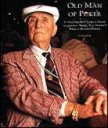 In the summer of 1949, as the story goes, inveterate gambler Nicholas "Nick the Greek" Dandolos approached Benny Binion with an unusual request – to challenge the best in a high-stakes poker marathon. Binion agreed to set up a match between Dandolos and the legendary Johnny Moss, with the stipulation that the game would be played in public view.
In the summer of 1949, as the story goes, inveterate gambler Nicholas "Nick the Greek" Dandolos approached Benny Binion with an unusual request – to challenge the best in a high-stakes poker marathon. Binion agreed to set up a match between Dandolos and the legendary Johnny Moss, with the stipulation that the game would be played in public view.
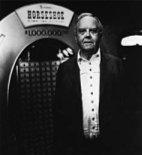 They played for five months, breaking for sleep only once every four or five days—this as fresh dealers rotated in every 20 minutes to keep the action brisk and precise. Meanwhile, the crowds of railbirds continued to grow.
They played for five months, breaking for sleep only once every four or five days—this as fresh dealers rotated in every 20 minutes to keep the action brisk and precise. Meanwhile, the crowds of railbirds continued to grow.
In one famous hand of five-card stud, the board cards were 8-6-4-J for the Greek and 6-9-2-3 for Moss. With over $100,000 already in the pot, the Greek bet $50,000. Moss, who had a 9 in the hole, moved all his available chips in, reraising. The Greek had only $140,000 left of what had recently been an eight-figure bankroll. “I guess I have to call you,” he said, pushing the last of his chips toward the pot, “because I think I’ve got a jack in the hole.” Moss told him, “Greek, if you’ve got a jack down there, you’re liable to win a helluva pot.” Dandalos indeed had the jack, and the pot came to $520,000. By recklessly chasing Moss’ pair of 9s during the final two betting rounds, Dandalos had just won half a million dollars.
“But that’s all right,” Moss said years later, observing that the Greek’s risk-reward ratio didn’t bode well for him. “I broke him in the end.” The Greek finally succumbed with a handshake and the famous line, “Mr. Moss, I have to let you go.” Legend has it that the Texan took between two and three million dollars from their marathon. Adjusted for inflation, this would be like winning $50 million today.
Though significant in its own way as a chapter in poker history, the five-month marathon took on added importance to Benny Binion. He noted that the public had gathered outside the casino each day to watch the game with the fervor of dedicated sports fans, and he was amazed at the attention the event had attracted. But it wasn’t until 1970 that Binion decided to re-create this excitement and stage a battle of poker giants – dubbed the "World Series Of Poker" – to determine who would be worthy of the title "World Champion." Some of the best players in the country were assembled, and Johnny Moss came out on top. The decision was democratic in that the champion was decided by popular vote.
The following year, the winner was determined by a freezeout competition, with players being systematically eliminated until one player had all the chips. Moss again was declared the World Champion.
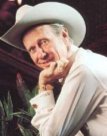 The next year’s winner, Amarillo Slim Preston, won $80,000 for beating twice as many opponents. Much more the raconteur than Mr. Moss, the tall, rail-thin Preston put together a quickie bestseller called Maverick Poker and went on the talk-show circuit. His four appearances on Johnny Carson’s Tonight Show were a hit, boosting exponentially the public’s interest in tournament poker. Slim’s looks and down-home style captivated the vast TV audience, and he went on to do three stints on 60 Minutes and a total of 11 appearances on the Tonight Show; he also addressed the National Press Club and the United States Senate.
The next year’s winner, Amarillo Slim Preston, won $80,000 for beating twice as many opponents. Much more the raconteur than Mr. Moss, the tall, rail-thin Preston put together a quickie bestseller called Maverick Poker and went on the talk-show circuit. His four appearances on Johnny Carson’s Tonight Show were a hit, boosting exponentially the public’s interest in tournament poker. Slim’s looks and down-home style captivated the vast TV audience, and he went on to do three stints on 60 Minutes and a total of 11 appearances on the Tonight Show; he also addressed the National Press Club and the United States Senate.
Another reason for the initial success of the WSOP was that it was an open tournament. Anyone with $10,000 could buy in. Rich, unskilled players could play alongside legendary professionals. Skilled but unknown poker players could now buy into games without having to establish a name for them.
It was only a year later that Binion participated in the Oral History Project at the University of Nevada-Reno and discussed the World Series with interviewer Mary Ellen Glass. "This poker game here gets us a lot of attention," he told Glass. "We had seven players last year, and this year we had 13. I look to have better than 20 next year. It’s even liable to get up to be 50, might get up to be more than that." Binion then paused, and as if gazing into the future, prophesied, "It will eventually."
 By the time Doyle Brunson became the second repeat champion in ’77, 85 players had entered, with first prize mushrooming to $340,000. Benny’s son Jack was running the tournament now, with Eric Drache, Jim Albrecht and Jack McClelland as his principal lieutenants. This team’s boldest move was to introduce satellites, less-expensive mini-tournaments designed to democratize entry into the Big One by giving players with as little as $220 a chance to win a $10,000 seat.
By the time Doyle Brunson became the second repeat champion in ’77, 85 players had entered, with first prize mushrooming to $340,000. Benny’s son Jack was running the tournament now, with Eric Drache, Jim Albrecht and Jack McClelland as his principal lieutenants. This team’s boldest move was to introduce satellites, less-expensive mini-tournaments designed to democratize entry into the Big One by giving players with as little as $220 a chance to win a $10,000 seat.
In the early 1980s, with the introduction of preliminary satellite competitions with lower buy-ins, Binion’s prophesy came to fruition and the popularity of the World Series of Poker soared. But even Benny Binion, who passed away on Christmas Day of 1989, would have had difficulty foreseeing the enormous growth the Horseshoe’s annual tournament has experienced in the past decade or so.
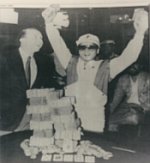 In 1987 Johnny Chan won the 1st of his very own ‘back to back’ successes. First prize rose to $700,000 by 1988. This time the Orient Express narrowly defeated Erik Seidel, a lanky and pensive New Yorker who had played beyond his experience until the very last hand; in that hand, however, Chan flopped a straight and trapped his opponent into going all in with a pair of queens. Unfortunately for Seidel, this was the only hand featured in Rounders, the Matt Damon-Edward Norton vehicle that ends with Damon heading to Binion’s from Manhattan with $10,000 in his pocket.
In 1987 Johnny Chan won the 1st of his very own ‘back to back’ successes. First prize rose to $700,000 by 1988. This time the Orient Express narrowly defeated Erik Seidel, a lanky and pensive New Yorker who had played beyond his experience until the very last hand; in that hand, however, Chan flopped a straight and trapped his opponent into going all in with a pair of queens. Unfortunately for Seidel, this was the only hand featured in Rounders, the Matt Damon-Edward Norton vehicle that ends with Damon heading to Binion’s from Manhattan with $10,000 in his pocket.
From ’91 through ’98, first prize in the championship has been an even $1 million, with entries and total prize money steadily climbing. Almost from its inception, in fact, the dollars awarded at the WSOP have dwarfed the purses of Wimbledon, the Masters and the Kentucky Derby, not to mention baseball’s World Series.
As far as prestige is concerned, a recent poll of 15 top pros asked them to rank the 50 most important tournaments worldwide. The championship event at Binion’s received every first-place vote, giving it a perfect aggregate score of 15. Twenty of the next 30 lowest scores, in fact, were preliminary WSOP events.
Golf and tennis have four majors apiece, boxing a shifting variety, horse-racing three. Poker still has only one.
The prize money increased proportionately, from $7+ MILLION in the early 90’s to a staggering $19+ MILLION in 2002.
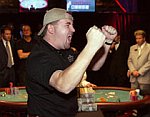 The 2003 event saw 839 entries play for over $8MILLION in prize money. That year’s event was fuelled by the entries provided by Internet card rooms, which provided ‘user friendly’ ways to qualify for the event via their card rooms. Chris Moneymaker, his real name of course, turned one of the $40 satellite entries into a $2.5M first prize and the world of poker changed forever.
The 2003 event saw 839 entries play for over $8MILLION in prize money. That year’s event was fuelled by the entries provided by Internet card rooms, which provided ‘user friendly’ ways to qualify for the event via their card rooms. Chris Moneymaker, his real name of course, turned one of the $40 satellite entries into a $2.5M first prize and the world of poker changed forever.
 In 2004 the main $10K event attracted prize money of almost $25,000,000 ALONE with Greg Raymer winning an unprecedented $5MILLION first prize.
In 2004 the main $10K event attracted prize money of almost $25,000,000 ALONE with Greg Raymer winning an unprecedented $5MILLION first prize.
2005 brought about more records when Joe Hachem took home a whopping $7.5M for besting 5619 whilst 2006 continued the upward trend with Jamie Gold taking $12M for winning against a field of 8773.
Of course the boom in entries has been entirely fuelled by the Internet card rooms, which have accounted for the vast majority of entries since 2003 and Chris Moneymakers climb to fame. In Oct 2006 the US Government effectively banned ‘online poker’ by making life difficult for players to deposit & cash out poker winnings. What effect that has on the 2007 numbers is anyone’s guess but I would hazard that if numbers exceed 5000 then Harrahs will have done a remarkable job in promoting the game.
So what of the future for the WSOP? Undoubtedly the stand out tournament of the year the WSOP will continue to prosper but with online pokers biggest market, the USA, in somewhat of a prohibition period things may not according to plan in for what is undoubtedly the greatest poker game on earth today!
Next week’s article is called The Game Today
